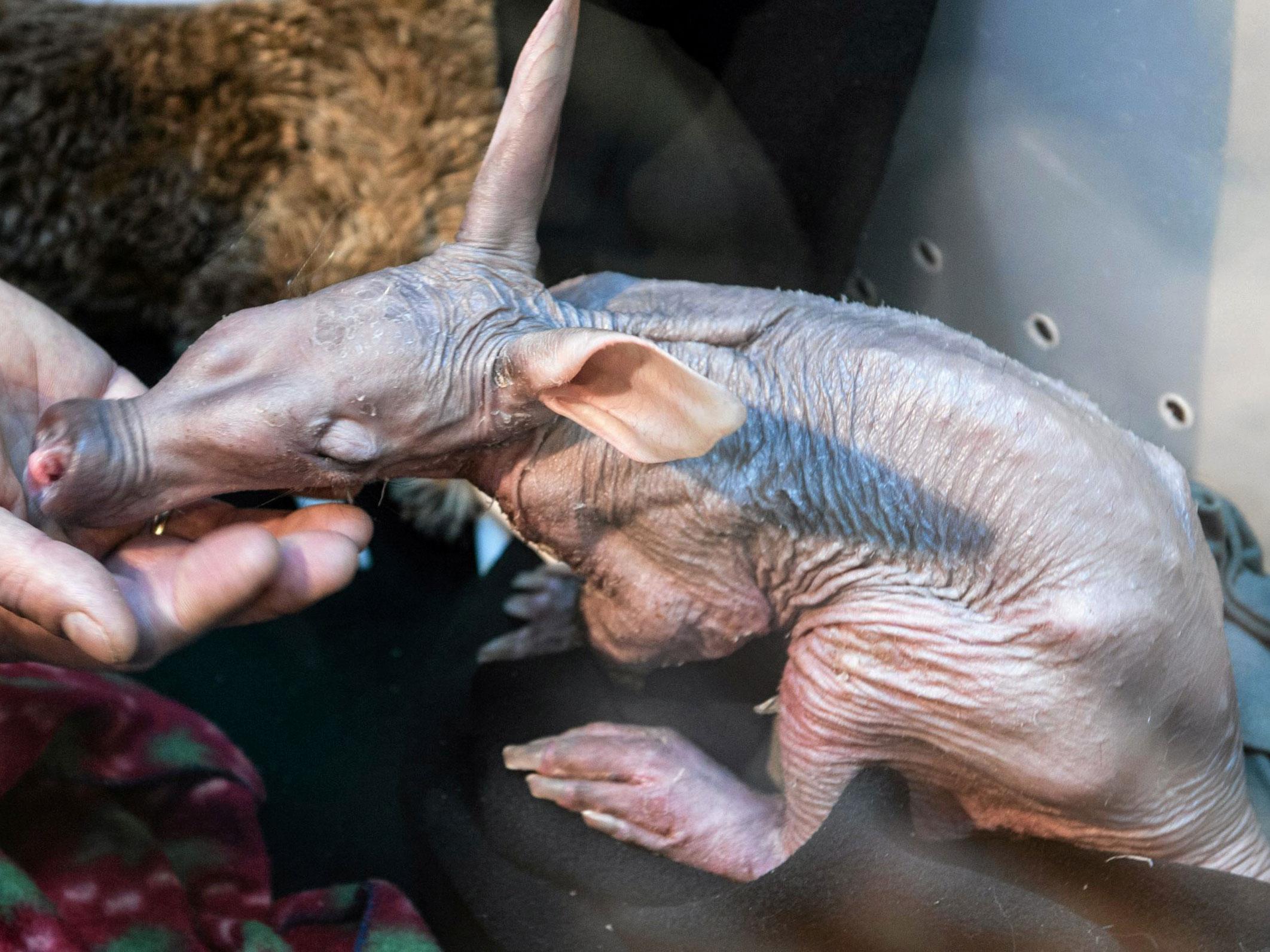Aardvarks of the Kalahari face extinction by starvation as climate change brings deadly droughts
After six 'ant bears' are fitted with monitors during one hot and dry summer, five die for lack of food

Your support helps us to tell the story
From reproductive rights to climate change to Big Tech, The Independent is on the ground when the story is developing. Whether it's investigating the financials of Elon Musk's pro-Trump PAC or producing our latest documentary, 'The A Word', which shines a light on the American women fighting for reproductive rights, we know how important it is to parse out the facts from the messaging.
At such a critical moment in US history, we need reporters on the ground. Your donation allows us to keep sending journalists to speak to both sides of the story.
The Independent is trusted by Americans across the entire political spectrum. And unlike many other quality news outlets, we choose not to lock Americans out of our reporting and analysis with paywalls. We believe quality journalism should be available to everyone, paid for by those who can afford it.
Your support makes all the difference.Aardvarks living in the Kalahari face extinction by starvation as deadly droughts become worse because of climate change, scientists have warned.
Researchers fitted monitors to six of the ‘ant bears’, as they are also known, in the Tswalu Kalahari Reserve in South Africa to study what happened to them over the hot and dry summer of 2012 and 2013.
Five of the animals died and the bodies of 11 others – all severely emaciated – were found during the course of the study.
Aardvarks are usually nocturnal and build large burrows where they sleep during the day.
The researchers said these burrows provided a refuge from the heat for at least 27 vertebrate species and if the species was wiped out, this would have “dire consequences” for other wildlife.
While the study was carried out in one part of the Kalahari, the scientists, from Witwatersrand University in South Africa, warned: “With climate change predicted to increase the frequency and duration of droughts, aardvarks may be extirpated from much of their current range.
“Their survival may be threatened by climate change via direct and indirect effects of increasing heat and aridity.”
Aardvarks, found in much of sub-Saharan Africa apart from the driest deserts, are listed as of “least concern” by the International Union for Conservation of Nature.
But the study found a bleak picture in the reserve.
“We implanted biologgers into six adult aardvarks resident in the semi-arid Kalahari. Following a particularly dry and hot summer, five of the study aardvarks and 11 other aardvarks at the study site died,” the researchers wrote in the journal Biology Letters.
“Visual observations … indicated a decline in the aardvarks’ body condition as the summer progressed. Poor body condition was evidenced by prominent ribs, spine and pelvic bones.
“The severe drought was likely to have reduced aardvark prey availability. Soil moisture directly affects activity, development and survival of subterranean insects such as ants and termites [13,14], on which aardvarks depend.
“Our results do not bode well for the future of aardvarks facing climate change.”
Despite the heat, the aardvarks’ body temperatures, normally about the same as a human’s, reached about 25 degrees Celsius because they were not able to find enough food to keep their bodies warm.
The researchers said aardvarks played a key role as “ecosystem engineers” and so their loss might cause problems for many other animals.
“Their prodigious excavation of burrows provides shelters to multiple … species; a decline of aardvark populations may thus have dire consequences for African ecosystems,” they wrote.
“The semi-arid zones, which aardvarks inhabit, are likely to become hotter and drier with climate change, with increased frequency and duration of droughts.
“Hotter and drier habitats will have direct effects on aardvarks through greater heat gain from the environment and increased water requirements.
“There also may be indirect effects, through changes in resource quality and availability, altered habitats and other ecosystem changes. Alterations in trophic interactions may be more pervasive than direct effects of climate change.”
The extraordinary impact that a single species can have on an ecosystem was seen in reverse in Yellowstone National Park after wolves were reintroduced in the 1990s.
Local elk suddenly started to avoid certain areas where they feared they were vulnerable to attack, which allowed tree saplings that would otherwise have been eaten to grow. A thick undergrowth developed, providing a rich habitat for insects, birds and other species.
Join our commenting forum
Join thought-provoking conversations, follow other Independent readers and see their replies
Comments